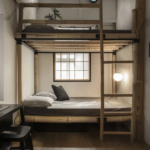Transforming a part of your home into a yoga studio can be a rewarding endeavor that enhances your practice and brings peace and tranquility into your daily life. Whether you have a dedicated room or a small corner, creating a space that fosters relaxation and mindfulness is essential. In this guide, we will provide you with practical tips and ideas to help you design a functional and serene yoga studio at home.
1. Choose the Right Flooring

Start with selecting the right type of flooring for your home yoga studio. Opt for natural materials like bamboo or hardwood, which are durable and provide a firm, non-slip surface. Bamboo flooring is not only eco-friendly but also offers a sleek, minimalist look that complements a calm and focused atmosphere. Consider layering with yoga mats for added comfort and support during practice.
2. Maximize Natural Light

Natural light can significantly enhance the ambiance of your yoga studio. Position your studio in a room with large windows to allow plenty of sunlight to flood the space. This not only makes the room feel more open and airy but also boosts mood and energy levels. Use sheer curtains or blinds to diffuse the light and maintain privacy without blocking out the beneficial sunlight completely.
3. Integrate Greenery
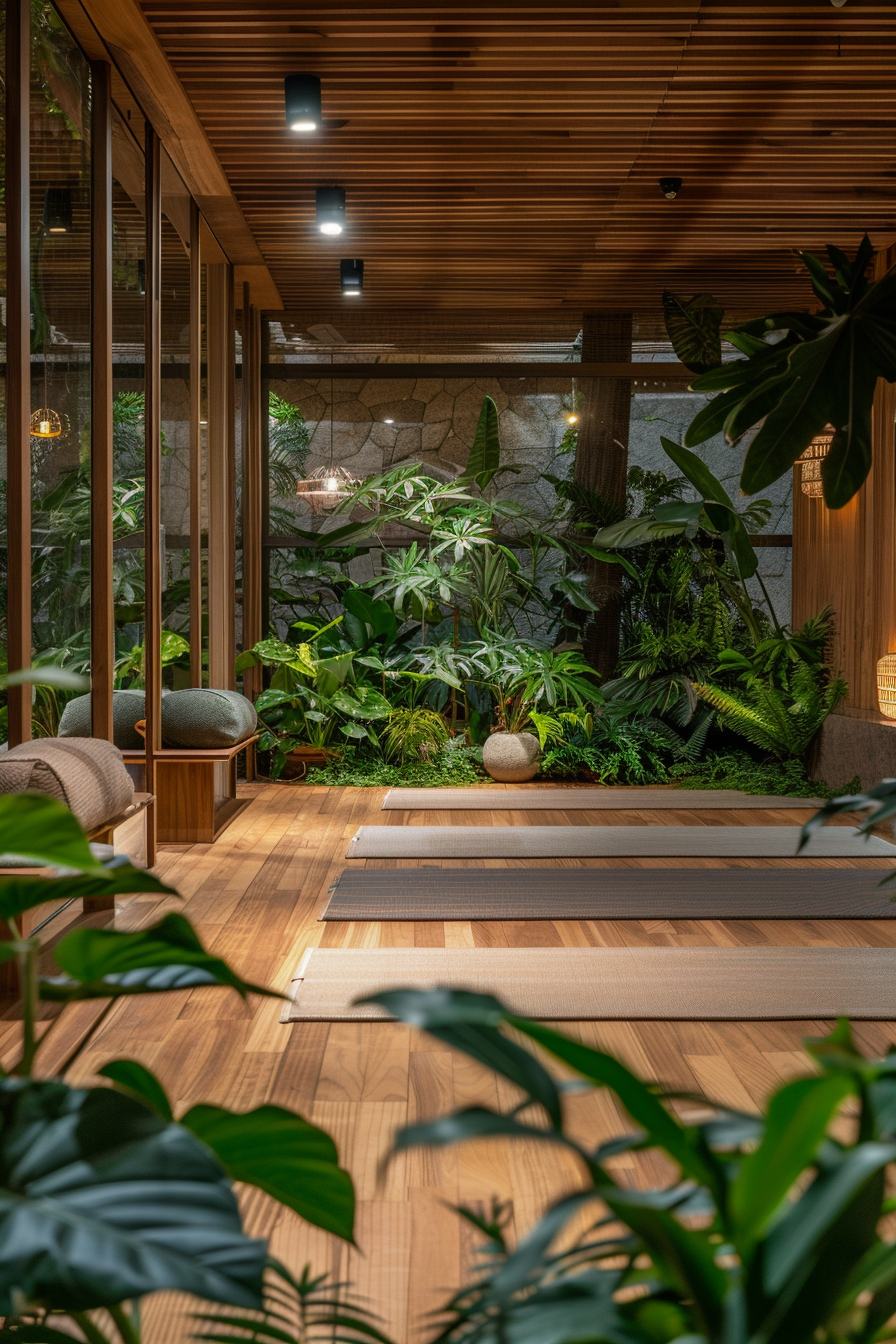
Introducing plants into your yoga studio can help purify the air and create a serene environment. Choose a variety of indoor plants like ferns, succulents, or peace lilies that thrive in low-light conditions and require minimal maintenance. Arranging plants around the room can also add a natural touch, making the space more inviting and peaceful.
4. Use Minimalist Decor
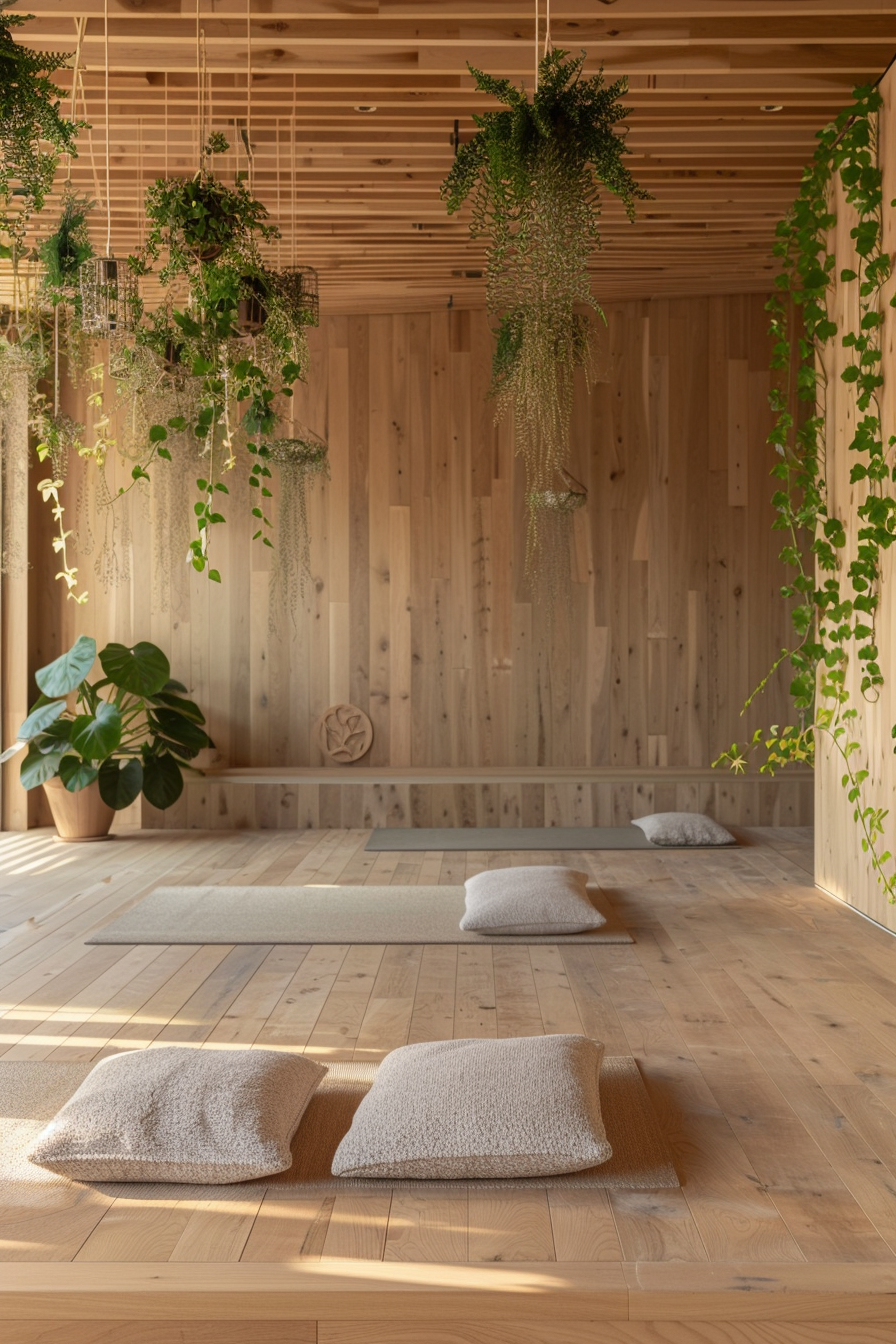
Adopt a minimalist approach when decorating your home yoga studio. Keep the decor simple and clutter-free to maintain a calm and distraction-free environment. Use neutral tones and natural materials to create a cohesive look that promotes relaxation and focus. Minimalist decor helps keep the mind clear, allowing you to fully immerse yourself in your practice.
5. Incorporate Functional Furniture

Choose furniture that serves a functional purpose in your yoga studio. Opt for pieces like yoga blocks, bolsters, and meditation cushions that support various poses and practices. Consider storage solutions that keep your equipment organized and easily accessible without taking up too much space. Functional furniture enhances the practicality of your studio while maintaining a clean and organized look.
6. Add Shoji Screens for Flexibility
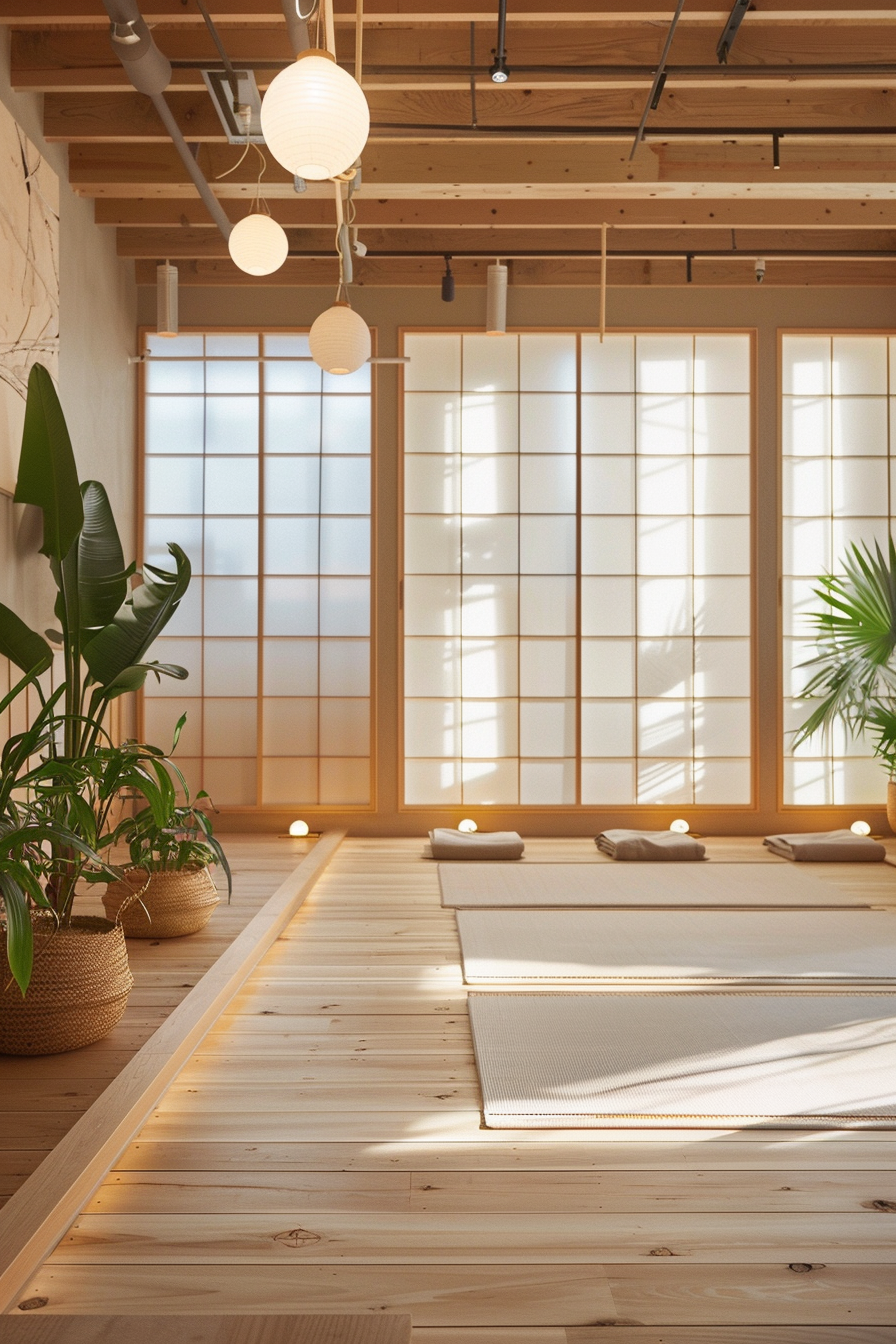
Shoji screens can be a versatile addition to your home yoga studio. These lightweight, translucent screens can be used to divide the space or create a sense of privacy during practice. They also add an element of traditional Japanese design, enhancing the aesthetic of your studio. Shoji screens are easily movable, allowing you to adjust the layout of your space as needed.
7. Create a Zen Corner
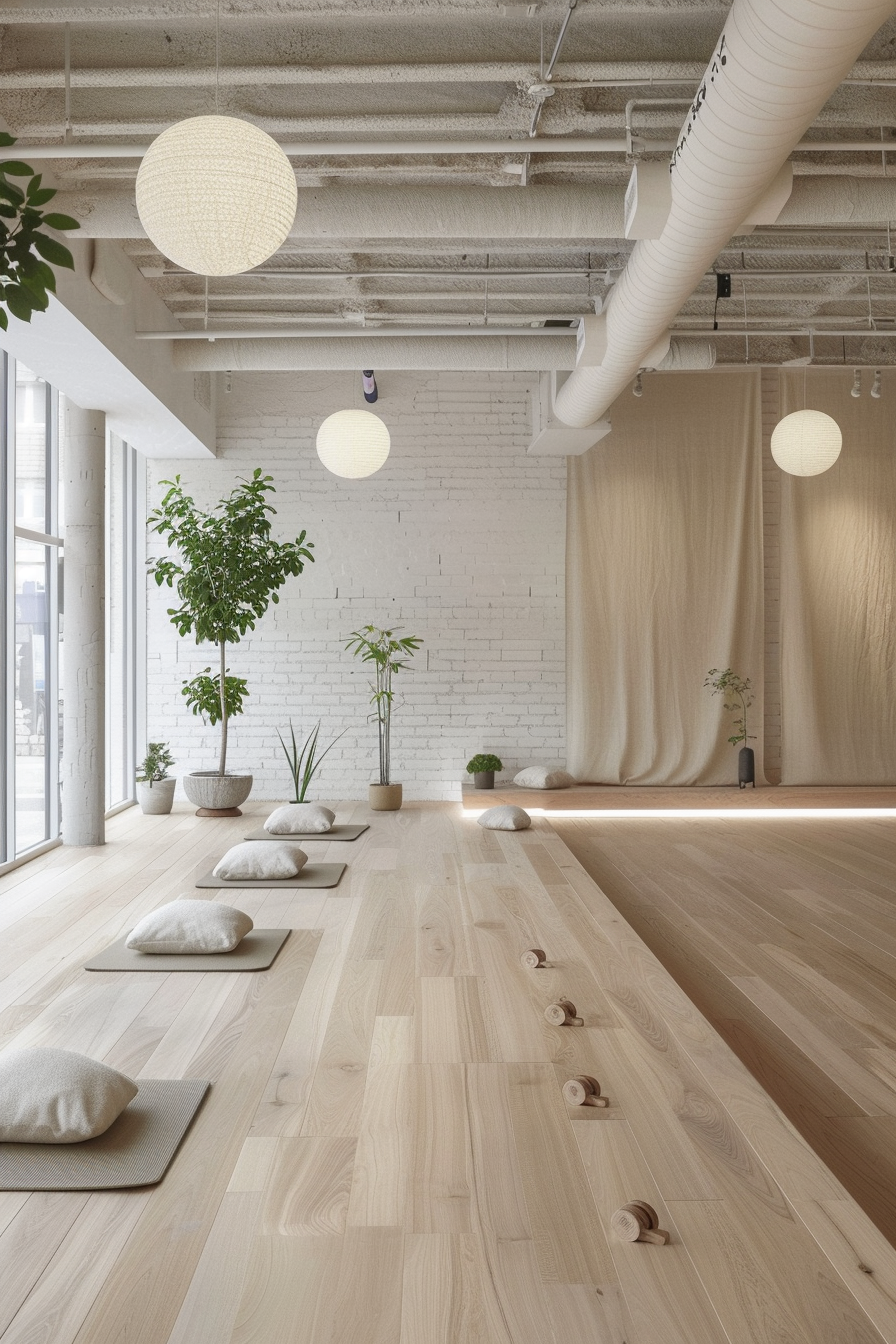
Designate a corner of your yoga studio for meditation and relaxation. Include elements like a comfortable cushion, a small table for incense or candles, and a few meaningful decor items such as statues or crystals. This dedicated Zen corner can serve as a peaceful retreat within your home, where you can practice mindfulness and unwind after a yoga session.
8. Install a Sound System

A good sound system can greatly enhance your yoga practice by providing calming music or guided meditations. Invest in a quality speaker that offers clear, balanced sound and can be easily connected to your devices. Soft, soothing music can help you stay focused and relaxed during your practice, creating a more immersive and enjoyable experience.
9. Optimize the Space with Mirrors
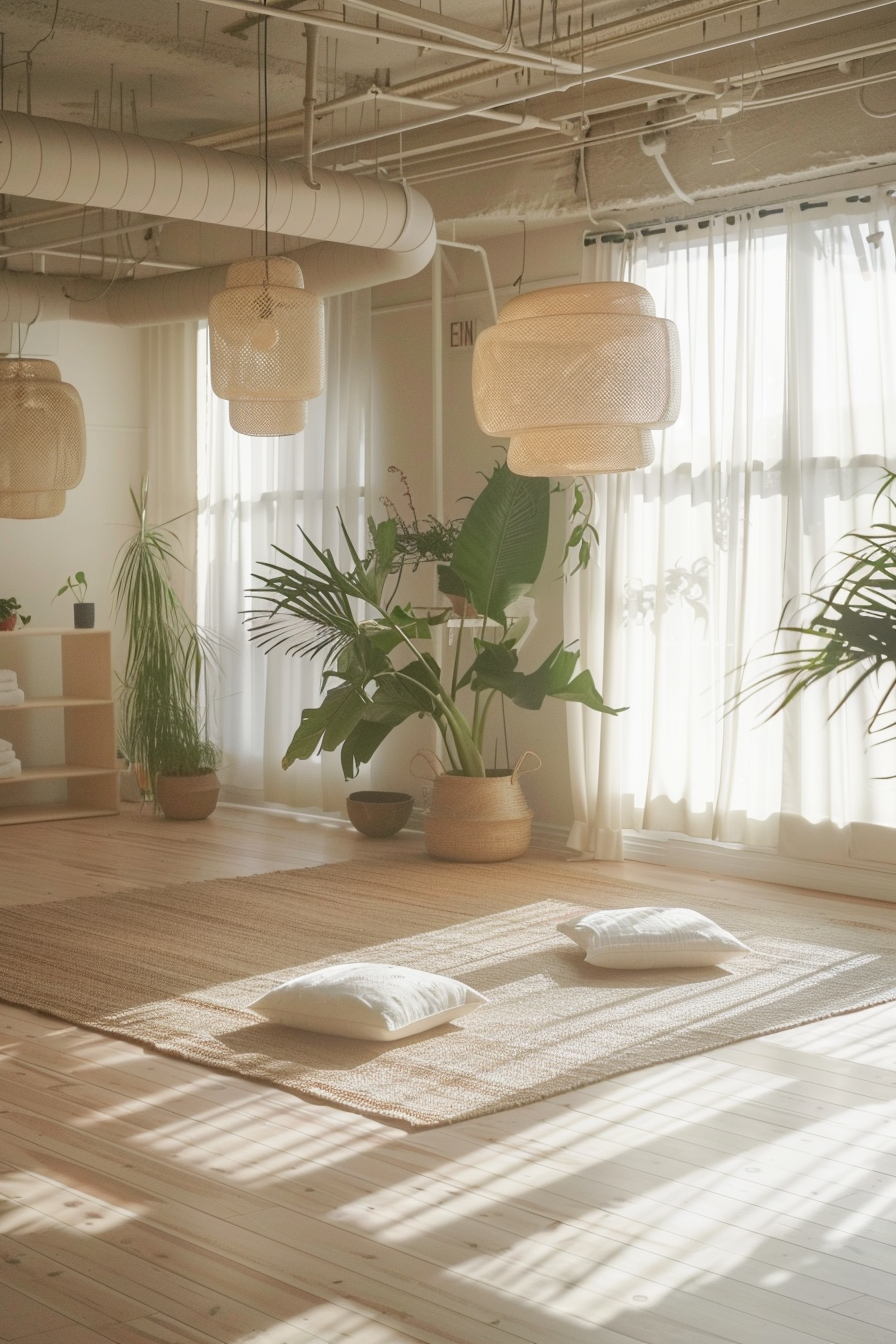
Installing mirrors in your home yoga studio can make the space feel larger and more open. Mirrors also allow you to check your alignment and form during practice, helping you improve your technique. Place mirrors on one or more walls to reflect light and create a bright, airy atmosphere.
10. Keep the Air Fresh
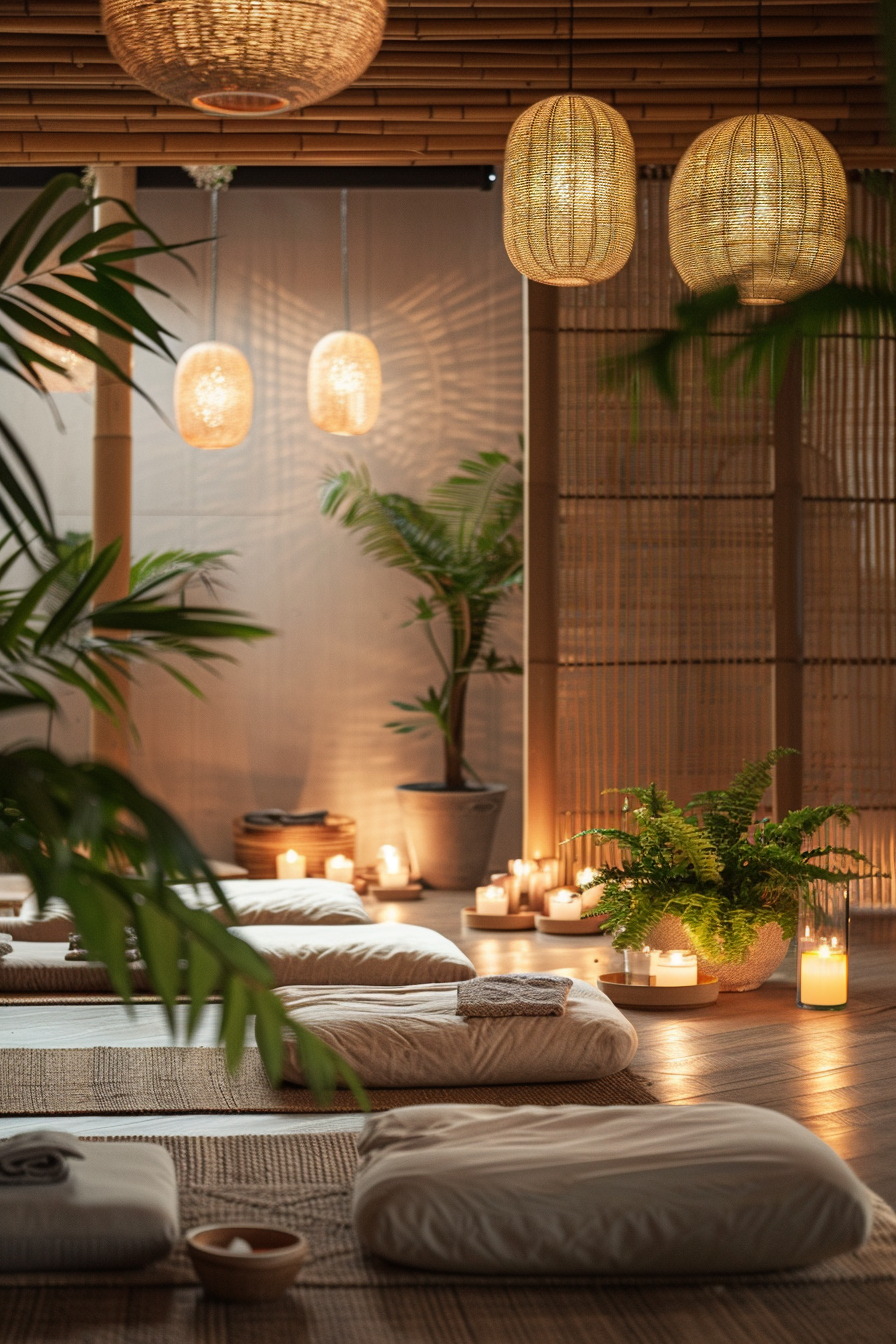
Maintaining good air quality is essential for a comfortable and healthy yoga practice. Use air purifiers to remove allergens and pollutants, and keep windows open whenever possible to ensure proper ventilation. Additionally, consider using essential oil diffusers with calming scents like lavender or eucalyptus to create a soothing atmosphere.
11. Utilize Smart Lighting
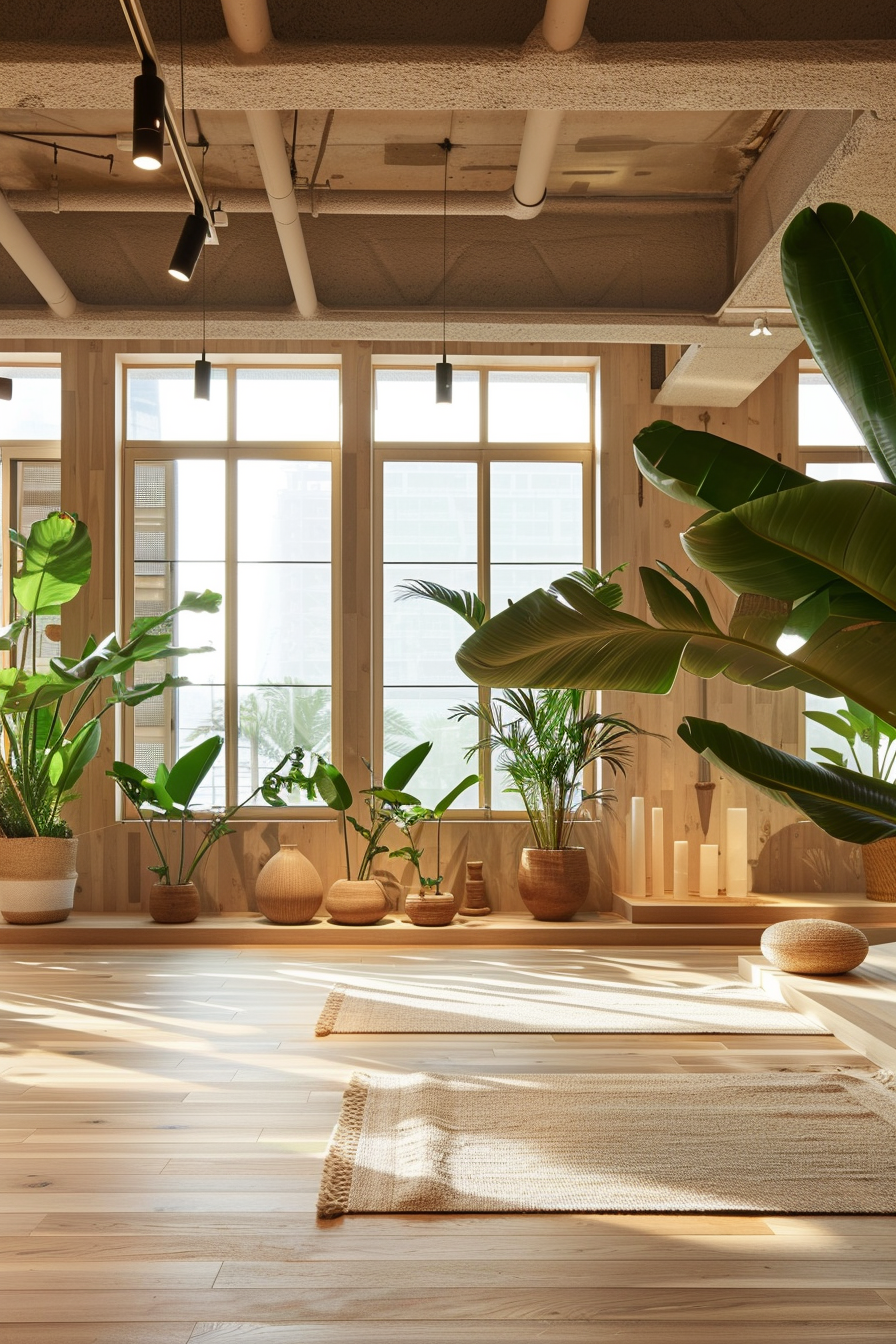
Smart lighting solutions can help you set the perfect mood for your yoga sessions. Install dimmable lights or smart bulbs that can be adjusted for brightness and color temperature. Use warm, soft lighting for relaxation and brighter, cooler lighting for more energetic practices. Smart lighting can be controlled remotely, allowing you to easily adjust the ambiance of your studio.
12. Incorporate Water Elements

Adding water elements like a small indoor fountain can enhance the tranquility of your yoga studio. The sound of flowing water creates a calming background noise, helping to drown out distractions and promote relaxation. Water features also add a touch of nature to your space, contributing to a serene and peaceful environment.
13. Use Natural Materials

Opt for natural materials in your yoga studio to create a harmonious and eco-friendly space. Choose furniture and decor made from wood, bamboo, cotton, and other sustainable resources. Natural materials not only look aesthetically pleasing but also contribute to a healthier indoor environment by minimizing exposure to synthetic chemicals.
14. Design an Open Layout

Maintain an open layout in your home yoga studio to ensure plenty of space for movement and stretching. Avoid overcrowding the room with too much furniture or decor. A spacious and uncluttered layout allows for a more versatile practice environment, accommodating different styles of yoga and exercise.
15. Enhance with Textures

Incorporate different textures to add depth and interest to your yoga studio. Use woven rugs, textured wall hangings, and soft cushions to create a cozy and inviting atmosphere. Textures can also provide additional comfort and support during your practice, enhancing the overall experience.
16. Focus on Clean Lines
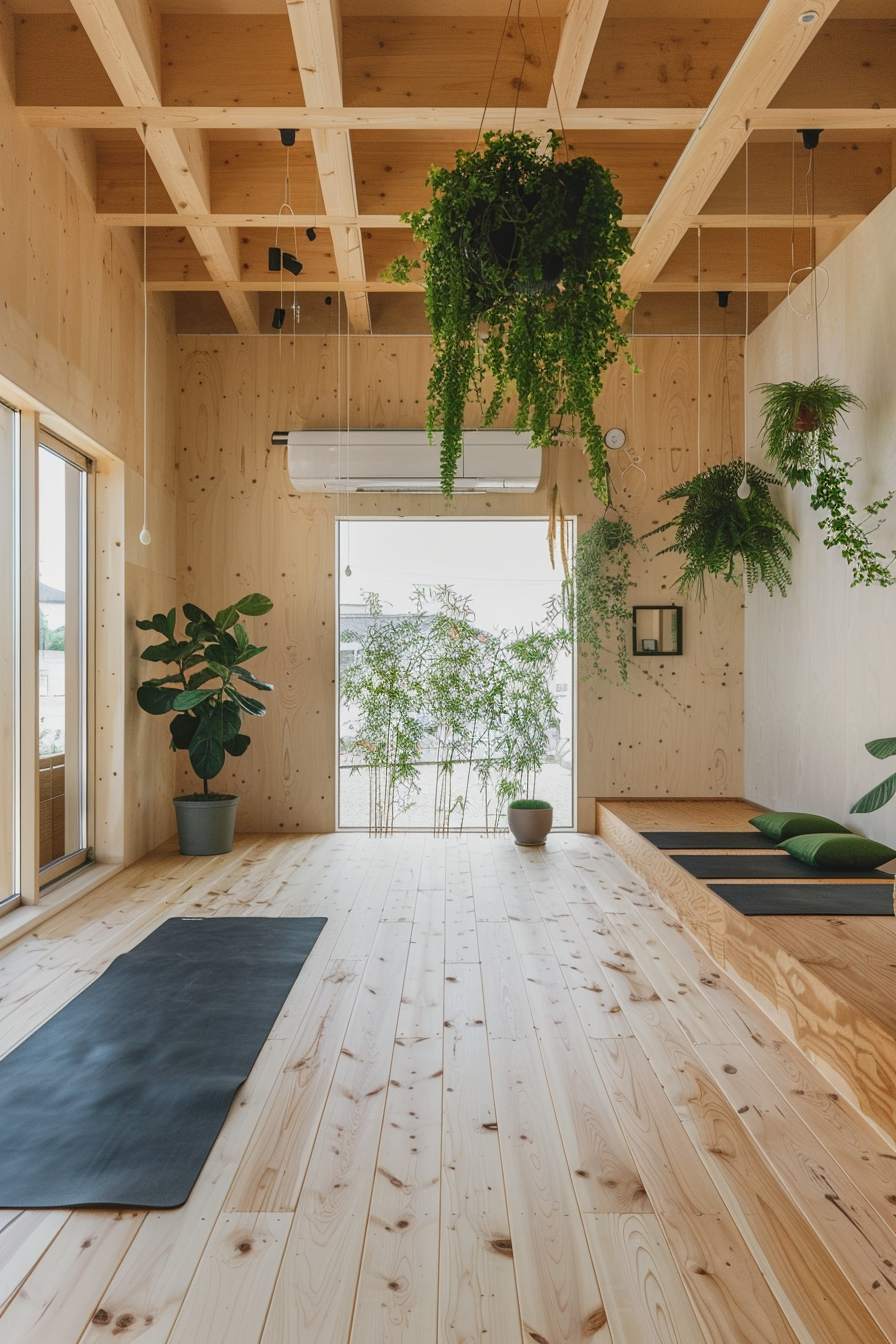
Embrace clean lines and simple shapes in your yoga studio design. This approach promotes a sense of order and tranquility, making it easier to focus on your practice. Choose furniture and decor with minimalist designs, avoiding ornate or overly detailed pieces that can create visual clutter.
17. Introduce Soft Furnishings

Soft furnishings like cushions, throws, and floor pillows can add comfort and warmth to your yoga studio. These items are perfect for creating cozy seating areas or for use during restorative yoga sessions. Choose soft, breathable fabrics that are easy to clean and maintain.
18. Install Adjustable Shelving

Adjustable shelving units offer flexible storage solutions for your yoga studio. Use shelves to organize yoga props, books, and other essentials. Adjustable shelving allows you to customize the layout to fit your specific needs, making it easy to keep the space tidy and functional.
19. Create a Feature Wall
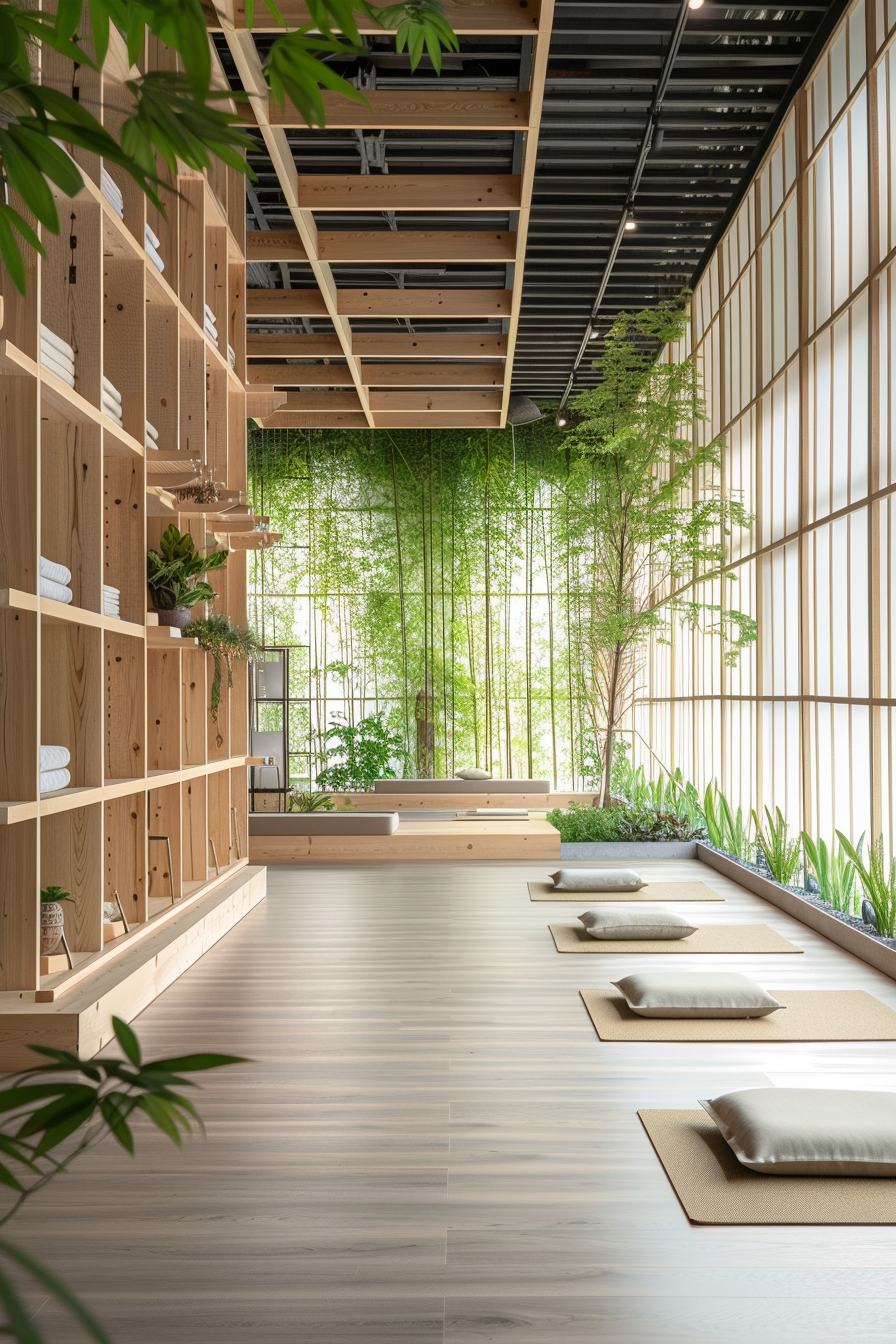
Design a feature wall to add visual interest to your yoga studio. This could be a wall with a unique paint color, a mural, or a collection of inspiring artwork. A feature wall can serve as a focal point, adding personality and style to the room while enhancing the overall ambiance.
20. Prioritize Quietness
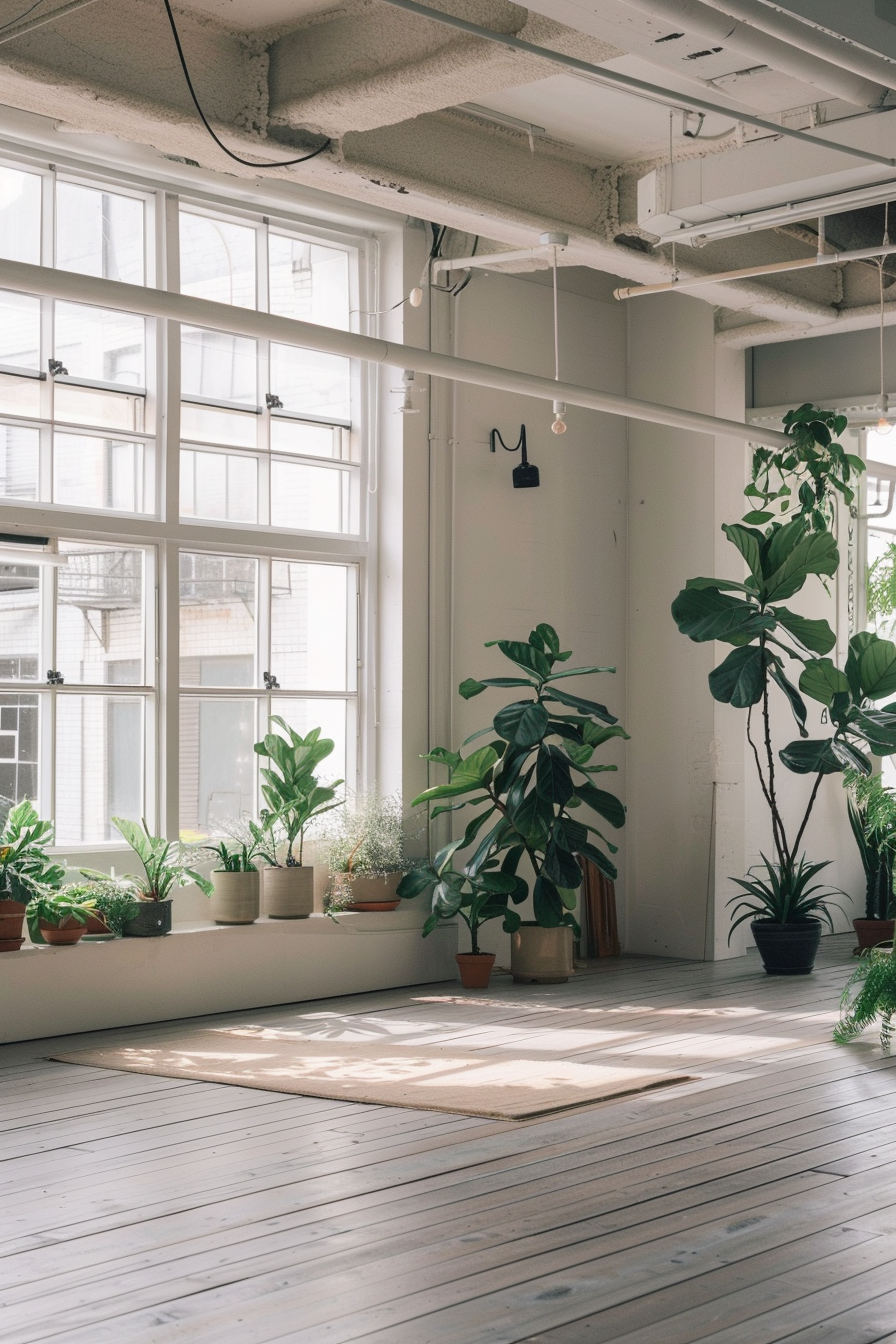
A quiet environment is essential for a successful yoga practice. Choose a room in your home that is away from high-traffic areas to minimize noise disruptions. Use soundproofing materials like thick curtains or rugs to reduce outside noise and create a peaceful sanctuary.
21. Incorporate Personal Touches
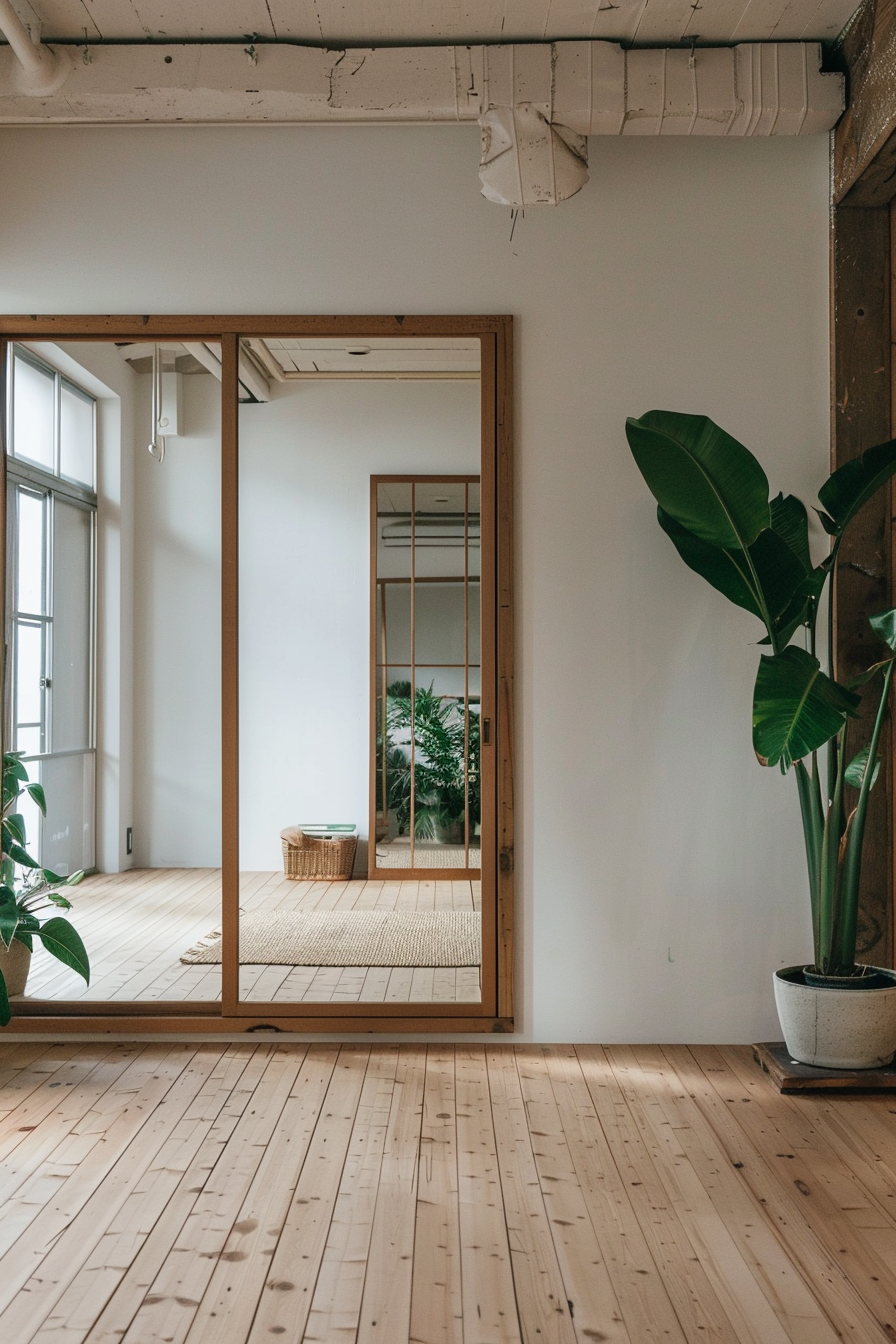
Make your yoga studio feel uniquely yours by incorporating personal touches. Display items that inspire you, such as photographs, quotes, or memorabilia. Personal touches can make the space feel more welcoming and motivating, encouraging you to spend more time in your studio.
22. Use Natural Light for Warmth

Take advantage of natural light to add warmth and energy to your yoga studio. Position your practice area near windows to soak up sunlight during your sessions. Natural light can make the space feel more inviting and invigorating, enhancing your overall yoga experience.
23. Choose Multi-functional Pieces
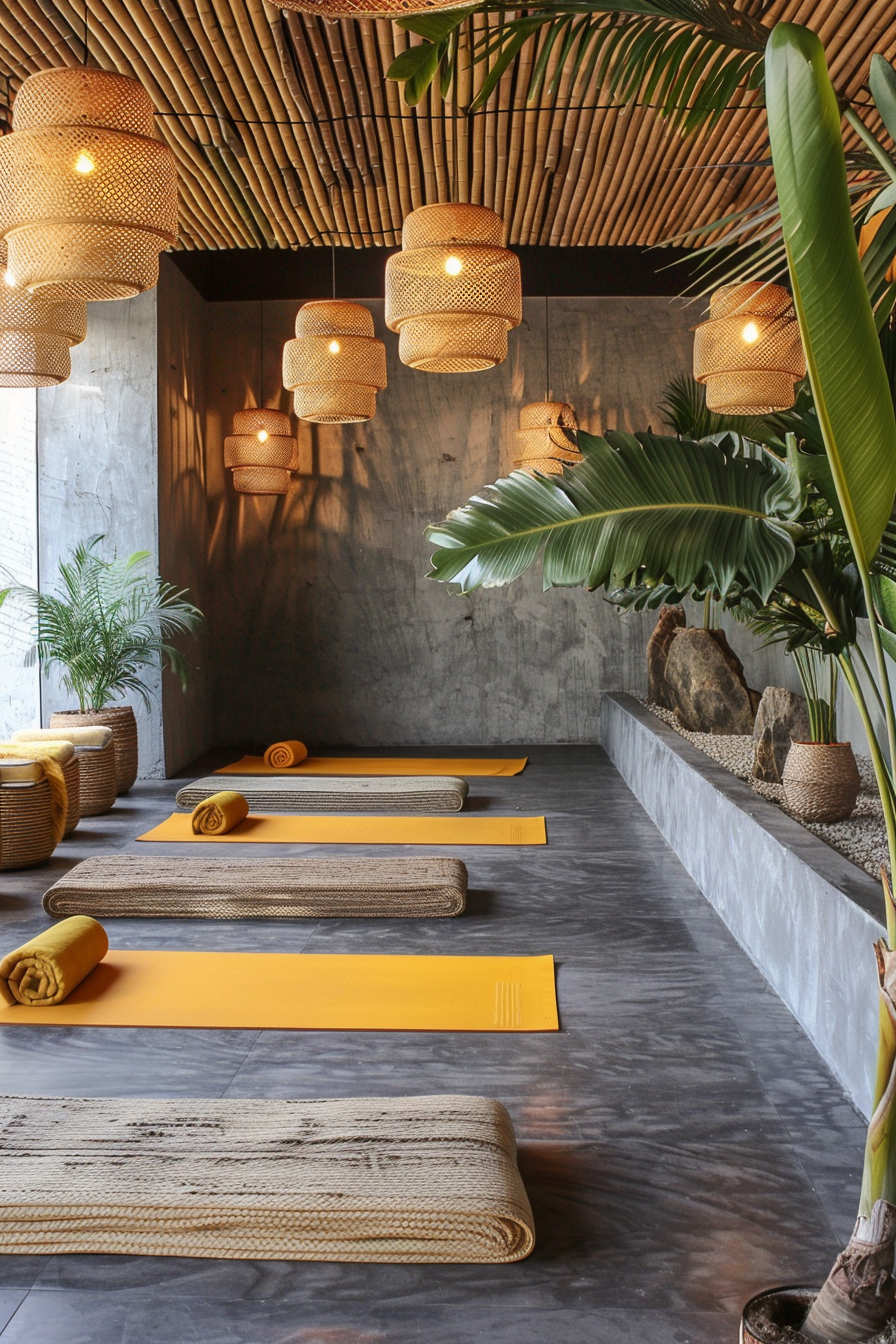
Opt for multi-functional furniture and decor items to maximize the utility of your yoga studio. Choose pieces that can serve multiple purposes, such as storage ottomans or convertible benches. Multi-functional items help keep the space organized and adaptable to various activities.
24. Emphasize Cleanliness
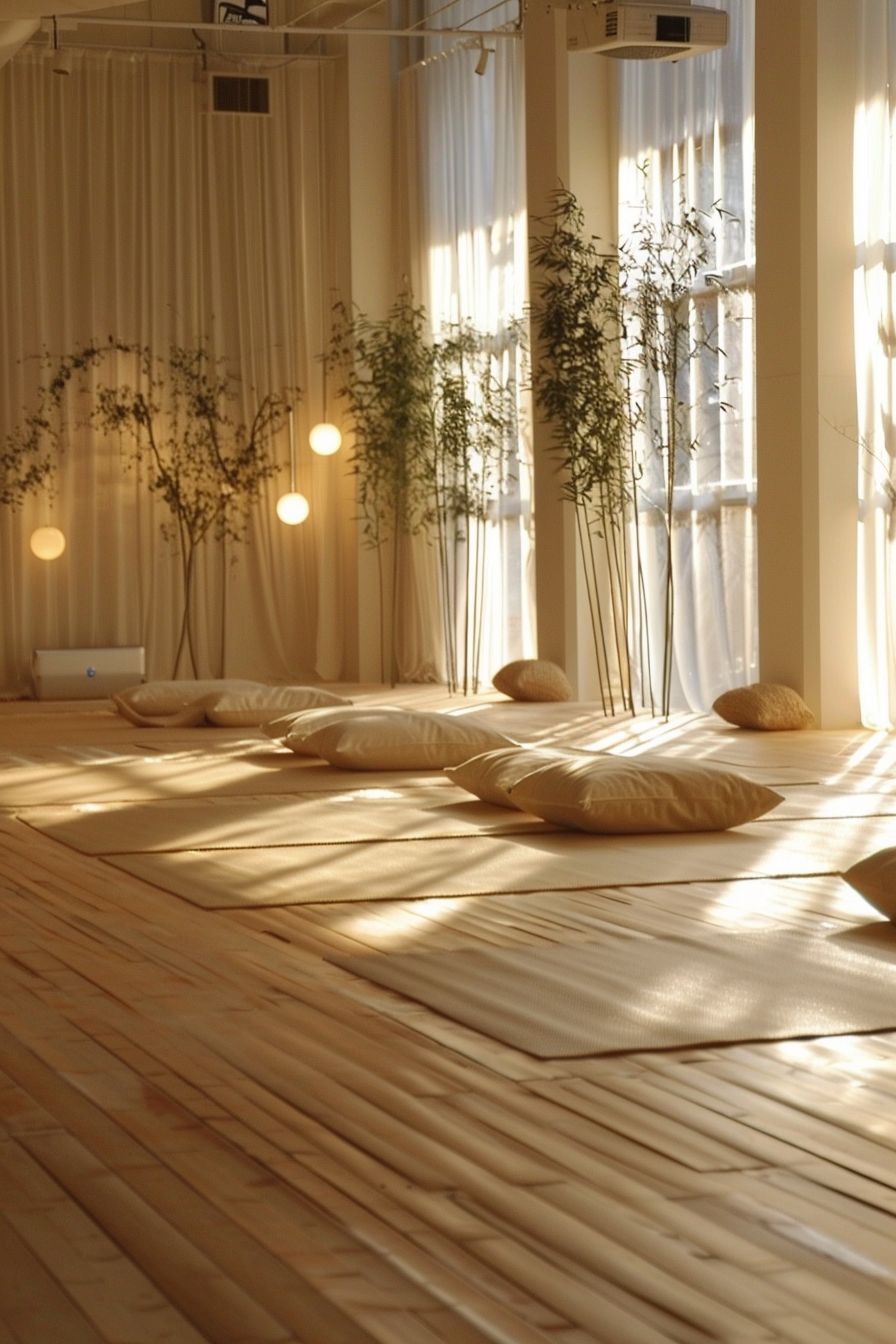
Maintain a clean and hygienic environment in your yoga studio. Regularly clean floors, mats, and equipment to prevent the buildup of dust and bacteria. Use natural cleaning products to keep the space fresh and safe without introducing harsh chemicals.
25. Consider Ceiling Heights

Ceiling height can impact the feel of your yoga studio. Higher ceilings create a sense of openness and freedom, which is ideal for practices involving stretching and movement. If your space has lower ceilings, use light colors and strategic lighting to make the room feel larger.
26. Optimize Ventilation

Good ventilation is crucial for maintaining a comfortable yoga studio. Ensure proper air circulation by opening windows or using fans. This helps keep the space cool and fresh, preventing it from feeling stuffy during intense practice sessions.
27. Incorporate Art and Aesthetics

Art can play a significant role in setting the mood for your yoga studio. Choose pieces that inspire calmness and introspection, such as abstract paintings or nature photography. Art can enhance the aesthetic appeal of your studio and provide visual stimulation during practice.
28. Use Diffused Lighting

Diffused lighting can create a soft, calming atmosphere in your yoga studio. Use lamps with soft shades or string lights to achieve a gentle glow. Avoid harsh, direct lighting that can be distracting or uncomfortable during practice.
29. Incorporate Storage Solutions

Keep your yoga studio organized with effective storage solutions. Use shelves, baskets, and cabinets to store yoga props, accessories, and personal items. Keeping the space tidy helps maintain a peaceful environment, allowing you to focus fully on your practice.
30. Add Personal Wellness Items

Incorporate items that enhance your personal wellness routine into your yoga studio. This could include a diffuser with essential oils, a small fridge for water and healthy snacks, or a humidifier for maintaining optimal air quality. Personal wellness items can make your studio a holistic space for both physical and mental well-being.
31. Design for Versatility

Ensure your yoga studio is versatile enough to accommodate various types of practice. Whether it’s yoga, meditation, or light exercise, a versatile design allows for a smooth transition between different activities. This flexibility can enhance the functionality and usability of your space.
32. Enhance with a Serene View
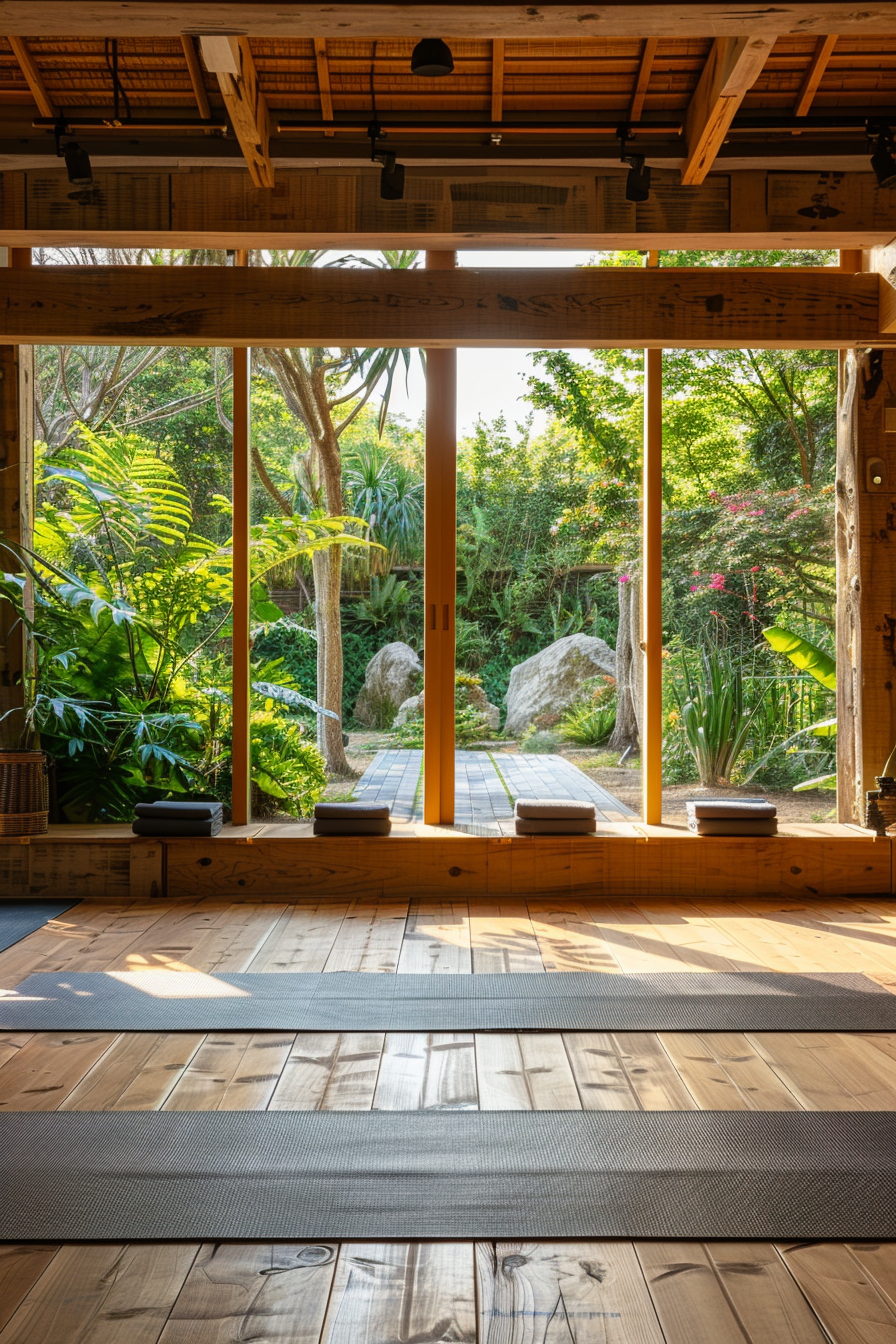
Position your yoga studio to take advantage of any serene views available. Whether it’s a garden, a scenic landscape, or even a well-designed backyard, a beautiful view can significantly enhance the tranquility and overall experience of your practice.
33. Utilize Wall Space

Make use of your wall space to maximize the functionality of your yoga studio. Install hooks or shelves to store yoga mats, straps, and other accessories. Wall-mounted racks can keep your equipment organized and easily accessible, freeing up floor space for practice.


